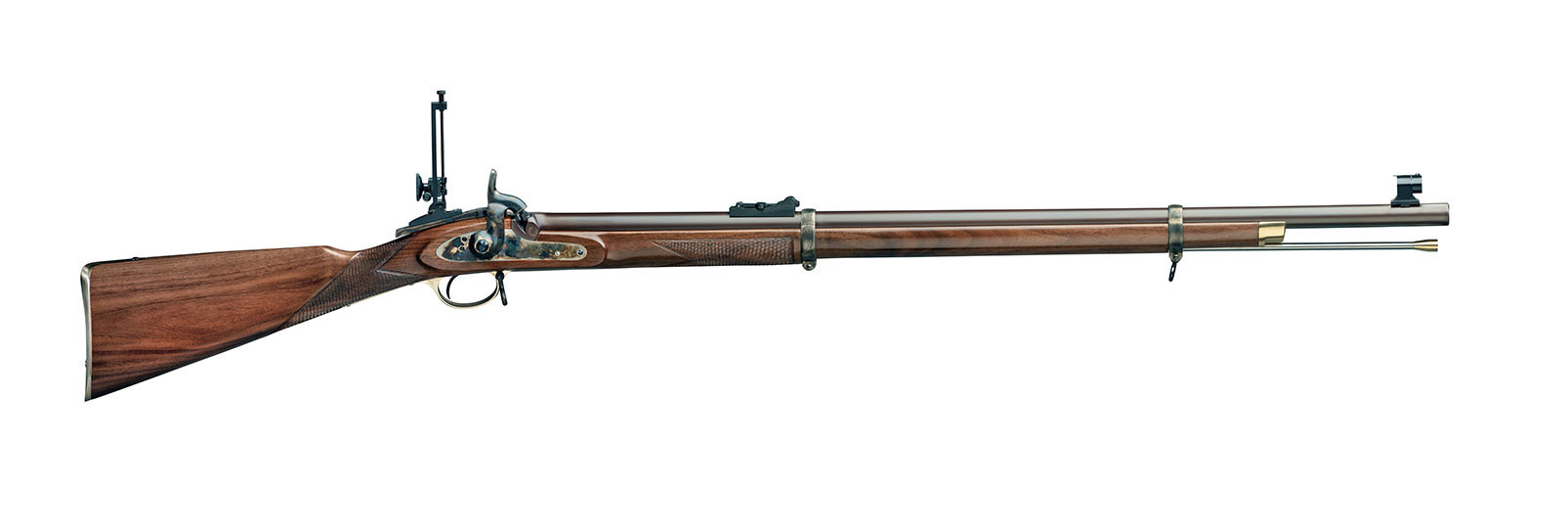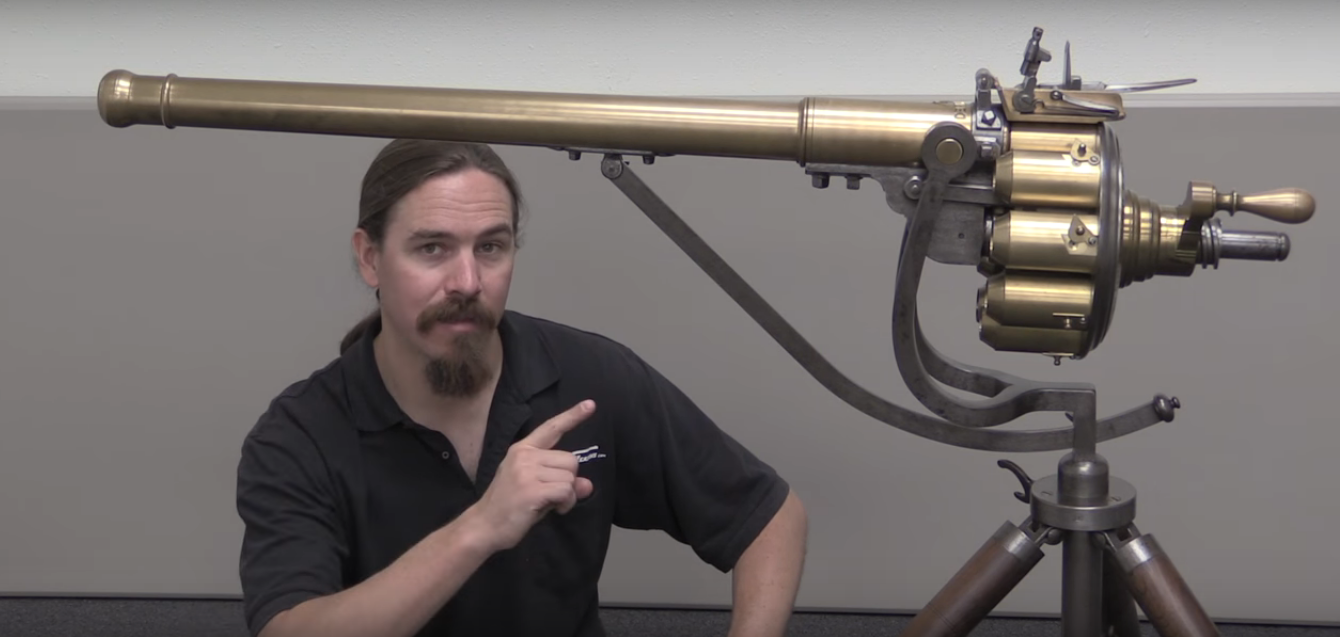The Republic's Arsenal:
William-Zaryanov Pattern Rifled Musket/Musketoon aka "Brun Blaireau":
Total length: 51.2 in. (Rifle)
Barrel length: 40.4 in. (Rifle)
Calibre: .63, but uses .62 balls
Maximum Effective Range: ~265m (Rifle)
The main service rifle of the Republic. Based on the old Zaryanov pattern musket design, improvements are added incluiding rifling, more accurate sights and little magnetic notches for temporarily placing the ram rod; There are conflicting sources on the origin of its "Brun Blaireau" nick name, some suggest it's because the ironic brass colored barrel finish and some notorious issue to the locks of the very first patch produced, where the priming pan covers are too stiff and fails to fire.
Stone Breech Loaded Rifle/Carbine:

Total Length: 46.7 in. (Rifle)
Barrel Length: 32.2 in. (Rifle)
Calibre: .62
Maximum Effective Range: ~330m (Rifle)
Designed and manufactured by civil-engineer-turned-gunsmmith Pierre Stone, it's the first breech-loader to enter service. Due to it's increased cost and complexity over the William-Zaryanov, manufacturing is relatively slow with only ~13000 Units per year, they are currently distributed to only ~40% of Light infantries and ~25% of Dragoons. The breech loading action gives the shooter a tactical advantage over his muzzel loading opponent by giving them the ability to reload fater and do so in a proned position. It's also for this reason they are distributed to the Light Infantry and Dragoons over other units first. While the first production batches still uses a flintlock system, percussion cap conversions are already starting to be manufactured, making the weapon even more tactically flexible.
Grenades:
Grenades only see limited use, as they are mostly for defending forts and key installations or assaulting fortifications.
Due to the danger they pose to both enemies and allies alike, grenades are only supplied to grenadiers, sappers and a few elite units. For example, the 2nd Priestess' Own Light Rifles are trained to cover their retreat using grenades, and the 112th Highland Hussars are the first calvary unit to field test the effectiveness of flintlock primed grenades used in conjunction with hand mortars. But more conventionally, hand mortars are only used in conjunction with grenades during defense against sieges.
Though there are reports of a lone sapper unit supported by light infantry being ambushed by a party of raiding schizos repelled a large in a forested mountain, proving that grenades are effective in certain scenarios outside of sieges as well.
Demeter-Bennett Pattern Hand mortars:
Ammunition: 3 in. Model 38 Grenades; Signals fire work; 3 1/2 in. Model 68 Primer Activated Short Fuze Grenades
Maximum Range: Long: 110m; Short: 75m
Based on the Zaryanov action, Bennett Hand Mortars are initially too unreliable & inconsistent, thus are rejected by the military. But later improvements by Demeter allowed the weapon to officially enter service. Short versions are mostly used by picket troops, hussars and a few cuirassiers squadrons trained in them. The former two usually use these hand cannons as signalling device, the latter and some hussar units use them as an assault weapon. Long version similar length to musketoon, only used in sieges. Same pattern are also used by the Navy.
Munitions Pistol Model 2 (pistols distributed to Cuirassiers, officers and artillerymen.)
.62 calibre
Percision Rifles:

A number are issued to light infantry sharpshooters to assassinate key enemy figures in small, mobile teams of 5; no bayonet latch; longer than standard issue rifles(~58 inch)
All newer examples are equiped with ladder sights, and slowly modernised to percussion breechloaders.
Artillery:
Experimental Rifled Breech-loading Gun:
The Republic's defensive oriented doctrine has longed for both accurate and devastating guns for a long time now. Rifled versions of the smoothbore field guns in service have proved to be unsatisfactory and limiting in trials. But a recently proposed type of shell and breech loaded action have made such a weapon possible. So far, 20 pounder and 10 pounder guns have been put into trial with great results. While the metallurgy of the nation's industry is enough to withstand the great pressure produced by such a system, however venting and obturation remain as issues. Once the project has been officially adopted by the military, it is expected to revolutionise both the Naval and land doctrine of the country.
Similarly, small arms designers have applied the same principle design of the new shells to musket balls, creating revered Acron shaped bullets which have the potential to increase lethality, accuracy and aid reloading. With these new experiments, it's not far fetched to say the Republic's fighting men are about to experience a leap in fighting capability.
Artillery Rockets:

Originally no more than crowd pleasing show props, firework arrows have been enlarged to become devastating siege weapons and a great demoraliser in the field. Although wildly inaccurate, these rockets have immense range and carry different types of warheads. From parachute equipped illumination flares, horrific carcass rounds and simple shells, the field commander has great flexibility when employing this weapon.
Typically mounted in stacks of tubes attached to gun carriages, heavier rockets are set up on extendable, ladder-like racks. Both are fired by triggering gunlocks that connect to their propellent. Some gun brigs are modified to fire such rockets, capitalising on its ability to set wooden constructs ablaze and its great demoralising effect on both sailors and fortress garrisons.
True to the inventive spirit of the country, changes such as mounting fins and drilling multiple holes in the bottom of the rockets-- making it spin like a rifled musket ball, have been proposed and tested.
Volley guns:
1 Pounder QF gun:
loaded with canister shots/normal round balls
Used against smaller pirate ships & against/in conjunction with boarding action
Installed near choke points in forts. Towed version tested but mothballed due to impracticality and logistical concern.

Chambers flintlock machine gun(unreliable but intimidating):
7x11 shots(longer version proposed but too unreliable & unsafe)
(smaller easier to load and less expensive, can install & maintain more)
both pivot mount & monopod versions exist but mostly used on ships(pivot);
expensive and only maintained on ship/forts in key areas

Volley flintlocks: a number carried by ships & forts;
used from vantage point; way more numerous in inventory than chambers gun
[more experimental volley guns exist but due to complexity and unreliability hardly any pass trials]